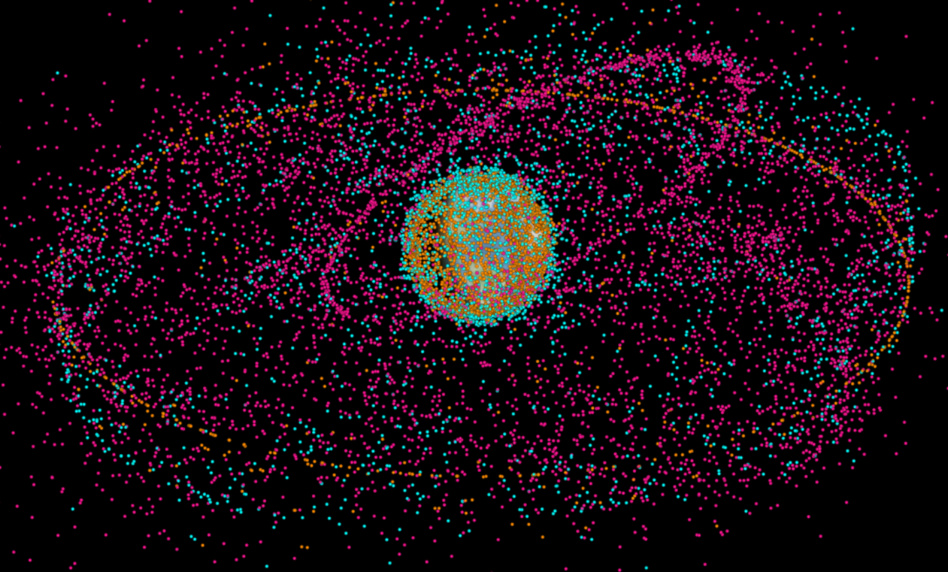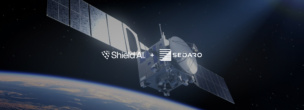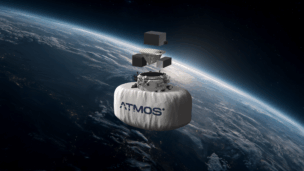This is the second installment of our deep dive on orbital debris. Read Part One here.
–
Plenty of ink is spilled on the notion that the space industry is at an inflection point, driven by lowering launch costs and barriers to entry. In the coming decade, tens of thousands of satellites are poised to enter the orbital commons. It’s hard to overstate the potential impact this shift could have on communication, navigation, exploration, climate research, and our understanding of the universe.
But there are risks, too. As more and more satellites head to low-Earth orbit (LEO), congestion at key altitudes is bound to get worse. Any collision could trigger a chain reaction of debris creation, potentially cutting off our access to space or rendering certain orbits unusable.
Governments of spacefaring nations bear responsibility for ensuring safe, sustained operations in the orbital commons. So far, though, there are few enforceable measures to restrict debris creation or hold operators accountable for jeopardizing a safe orbital environment.
With industry at an inflection point, regulators, policymakers, and diplomats, by contrast, stand at a crossroads: Forge forward with rules that set the stage for a safe and prosperous future in space—or leave a new era of space exploration and commercialization up to chance.
Enter the Federal Communications Commission
The FCC is responsible for handing out commercial satellite communication licenses to any satellite operators that plan to transmit satellite data to any device or hardware within the US, from ground stations to mobile user terminals.
Back in April 2020, the FCC proposed a rule for mitigating orbital debris. The rule would make several changes to how companies active in space would have to conduct themselves with respect to orbital debris creation, and to the FCC’s satellite review process left of launch.
Under the new rule, the FCC would:
- Consider the collision risk for entire constellations, rather than just individual satellites, and update the numerical baseline for risk analysis.
- Require manufacturers to equip satellites with propulsion systems so they can make collision maneuvers.
- Increase data-sharing requirements for information relating to satellite trackability and maneuvers.
- Limit the license extension period for GEO satellites to five years at a time.
- Place responsibility for violating any international treaties on operators, rather than the US government.
The commission adopted part of its debris mitigation rule on Apr. 23, 2020. However, this adopted portion of the rule still has not been entered into the federal registry for unclear reasons. The FCC can’t apply the rule to new satellite licenses until after it’s entered in the federal registry, so even the adopted rule remains unenforceable.
The measures included under the attached notice of proposed rulemaking are still up for comment and debate, but the motion fell off the agency’s radar in the early days of Covid-19. Since the pandemic derailed the rulemaking process, the new frameworks haven’t moved forward to become an enforceable set of guidelines.
In Oct. ‘21 testimony to Congress, former NASA Administrator Jim Bridenstine argued for the adoption of these rules, and also for the FCC to adopt other common-sense guidelines:
- Approve constellations based on an aggregate rather than individual collision risk
- Determine a definitive capacity for LEO
- Collaborate with foreign counterparts to best assign orbits and prioritize high-value satellites
- Take into account the effects of megaconstellations on astronomy and future government and commercial operations in space.
“What the FCC was about to adopt in April 2020 was a really good start,” said John Janka, head of government affairs at Viasat. “But they stalled. There was some pressure that came from the large LEO operators, who expressed concerns that this was going to affect their plans, and the commission put it on pause.”
Ah, those large LEO operators. The megaconstellation developers Janka referenced benefit from keeping prying eyes, inquiring minds, and public documents firewalled from proprietary satellite designs. When the FCC issues a license for a specified batch of satellites, it does so with the provision that if a satellite goes out of service or fails to reach orbit, the licensee can put another version of that same satellite in orbit.
However, there’s no clear definition for how different or similar a new satellite has to be in order to be considered a replacement. “If I change the color of a satellite, nobody cares, right?” said Janka. “If I reconfigure it, but keep the same cross sectional area, probably no difference. But if I make it a lot bigger, new collision risk. If I change the radio parameters, I could be causing more interference.”
Large constellation operators like SpaceX’s Starlink and OneWeb have a vested interest in keeping the definitions for what requires additional reviews vague. Per Janka, they argue that the FCC would be violating IP rights by requiring public disclosure of spacecraft tweaks or updates.
“They want freedom to iterate without limits, that they just don’t want to go back and be subject to scrutiny on these collision risk and interference issues,” said Janka.
Viasat, it should be noted, competes with the current and future LEO broadband megaconstellations…from GEO. Geostationary orbits are largely beyond the purview of this series. Debris is still an issue in GEO, to be sure. The orbit is home to 541 active satellites as of February 2022, as well as thousands of debris objects greater than 10cm and tens of thousands larger than 1cm. It’s also tougher to track debris in GEO, since ground-based sensors are less effective for more distant objects.
However, since GEO is so much further away from the Earth’s surface than LEO, there’s a lot more surface area for that debris to spread out. Plus, as Stefan Frey, co-founder of Vyoma, told Payload recently, “GEO operators behave quite well because they know that if they pollute their own segment, they won’t be able to launch there anymore.”
Back to broadband beefs…
Viasat sued the FCC last year, alleging that the commission did not require SpaceX’s Starlink to go through the formally required National Environmental Policy Act (NEPA) environmental reviews prior to launching. The suit specifically concerns an FCC decision to allow SpaceX to lower the orbit of a few thousand Starlink satellites without a NEPA review. A ruling in favor of Viasat would set a precedent for future reviews before launch or modification. The FCC, for its part, has defended its approval of Starlink.
NEPA requires the FCC to conduct an environmental review of any planned satellites and their potential impact on the environment. But the FCC frequently brushes off the NEPA review by using categorical exclusions. The categorical exclusion, adopted in 1986, means that the FCC can choose not to conduct the review on broad grounds. The outstanding Viasat suit could change that, but it’s not looking likely that they’ll win.
Meanwhile, in the midst of the legal debate over whether the FCC should be required to perform more stringent reviews before approving satellite launches, the agency is pushing forward on constellation approvals.
Applications aren’t slowing down anytime soon, either.
In March, a senior FCC official announced that it was expanding its satellite division staff by 38% to handle increased demand for satellite approvals. At the time, the agency reported it had received applications to send 38,000 additional broadband satellites to LEO on top of the ~17,000 it had already greenlit as of Nov. 2021. Globally, nearly 100,000 communications satellites are either approved or awaiting approval. And no one seems to have an answer on LEO’s safe carrying capacity.
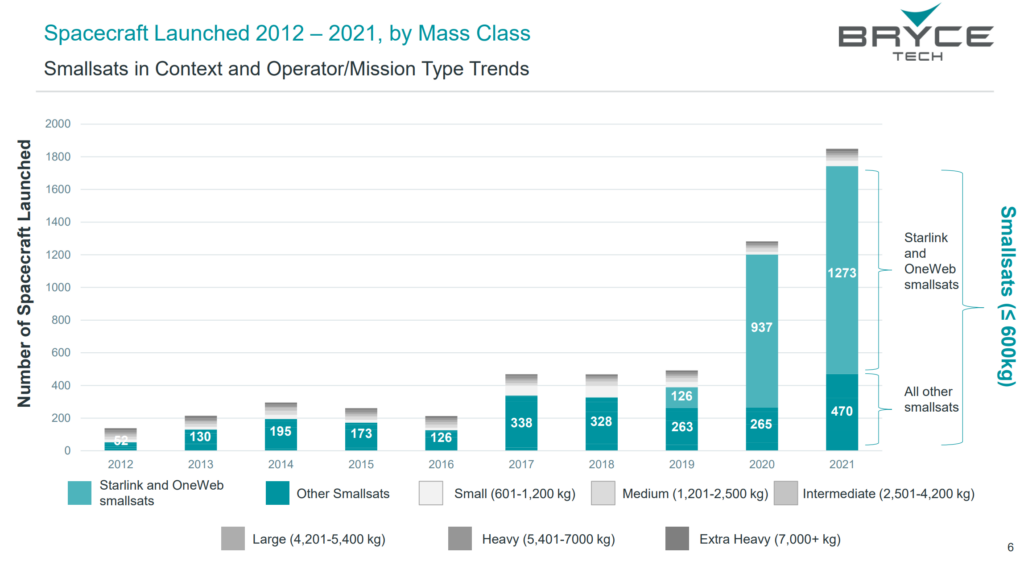
Law, technology, and market-making
“Technology is always outpacing the law,” said Janka.
“And that’s fine, right? That’s a normal and good thing. But it is important to realize that the rules that were written 10 years ago, five years ago, maybe even three years ago, weren’t written with the types of situations we’re seeing today.”
In the case of debris mitigation, though, any law that attempts to mandate debris removal may outpace technology. There are a few debris removal startups rushing to be the first to successfully, actively deorbit a wayward upper stage or spent satellite, but it’s never actually been done.
The state of debris mitigation and removal technology right now is not at a point where an all-encompassing government mandate to remove spent satellites from orbit right away makes any sense. Two companies, Astroscale and ClearSpace, are actively working on debris removal technology and have signed contracts to test and develop that technology.
A handful of other players—Starfish Space, D-Orbit, Rogue Space Systems, and Turion Space, to name a few—are working on some version of debris removal and servicing tech. Astroscale has a test currently in orbit as of this writing: the ELSA-d (End-of-Life Services by Astroscale demonstration) mission.
ELSA-d is testing a series of complex rendezvous and capturing maneuvers using a servicer-client pair of spacecraft orbiting in relatively close proximity. So far, they’ve successfully completed a magnetic capture of the client spacecraft in close quarters and a close approach, separating the two spacecraft by 1,700km then drawing the servicer to within 160m of the client. The demonstration will end in an autonomous capture of the client spacecraft.
European startup ClearSpace also has a contract with ESA for an active debris removal demonstration in the next few years. This demonstration, if all goes to plan, will be the first to remove an existing piece of large debris from orbit. The target: a spent Vespa stage from a 2013 Vega launch. Capturing an unmaneuverable piece of debris rather than a client craft designed with a docking plate for capture presents its own challenges, including uncontrolled spin that makes it harder to approach safely with a debris removal craft.
ClearSpace CEO Luc Piguet told Payload that it’s important to ensure there are “sinks” for large pieces of debris, regardless of whether they have docking mechanisms. These large pieces of debris, if they collide with something else in space, become a source for smaller pieces of debris, which are more difficult to keep track of or to eventually remove.
It’s going to take a lot of investment and iteration to get technology to the point where debris removal services are cheap and reliable. The bar isn’t ridiculously high, either, for making a significant impact in the debris environment through removal—NASA modeling has shown that removing as little as five high-risk debris objects from densely populated orbits per year could stabilize the orbital environment and prevent Kessler syndrome.
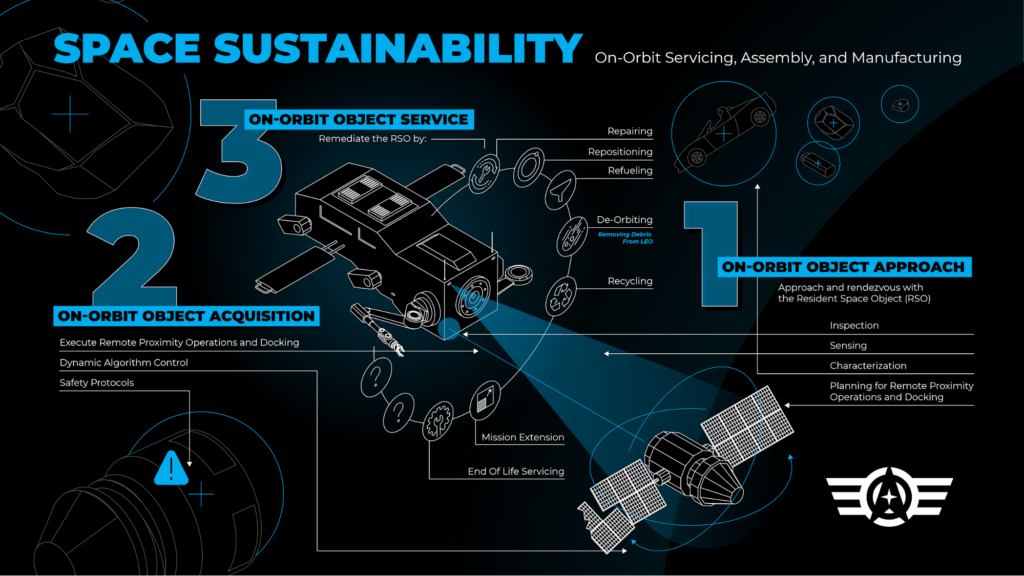
The government can play a role here, too, by funding development of debris removal capabilities while it is in the early stages of development.
“With any new technology, government investment in R&D is essential,” said Chris Blackerby, COO of Astroscale. At low technology readiness levels (TRL), a metric that the US government uses to categorize the maturity of a technology during the acquisition stage, Blackerby says the government is always involved. That investment is necessary to jump the “valley of death” that appears between the ideation stage of a new technology and commercial viability.
Astroscale is “moving up that chain in terms of demonstrating the capability in the actual environment where we’re going to use it,” said Blackerby.
“We still need some pushing [and] acceleration from the government, some buy-in, literally and figuratively, from the government to make this work.” Once or if that occurs, “we get to a point where we understand the technology [and] start to focus on volume production.” Then, per this logic, cost curves will begin bending downward.
“I really believe that without a mature service industry, we’re always going to be stuck in first gear,” said Blackerby. “We’re always going to be reliant on government missions, never really opening it up to a truly commercial opportunity, which is what accelerates everything else that we can do in space.”
A path forward for debris removal
With tech maturity, Astroscale, for one, is confident that it can close the business case. Through a combination of government buy-in for tech development, progress on the regulatory front, and higher stakes with increased congestion in LEO, the cost equation will begin to make sense for satellite operators.
“What’s changing is the orbital environment,” said Blackerby. “Companies are going to realize that it’s in their best economic interest to start dealing with this sooner rather than later. Because they’re putting their own revenue streams at risk.”
“Right now, is the situation at that point where they feel like they have to do it?” he said. “I mean, clearly not, because we don’t see a lot of people buying into it yet. Do we expect it to be there in the next several years? Certainly.”
There’s a long way to go before it’s profitable to grab stuff from space and toss it back down, and a lot of work is required from both the government and commercial companies. But many in the know across the space industry are hopeful—even optimistic—that there will be a solution before it’s too late.
“Here’s the good news,” said Janka, “people are waking up. Over the course of the past two years, I think we’ve gone from denial to recognition. And now we’re focused on what we can do to solve it.”
All eyes up there
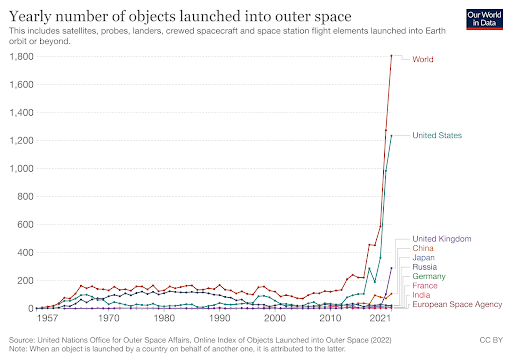
So we’re in a bit of a sticky situation up in LEO. Demand for real estate is growing, and as the levels of both junk and operational assets grow, the risks of overcrowding grow more clear.
Tens of thousands of satellites are slated for launch in the coming decade, and meanwhile, the regulatory agencies in charge are more focused on rubber-stamping industry proposals, critics say, than proactively considering the orbital commons.
Still, all is not lost. Significant progress in commercial space situational awareness (SSA) and space traffic management (STM) products promises to ease the risk of collisions with active satellites and make debris removal more feasible. Government initiatives like Orbital Prime, a USSF project to “prime” active debris removal and on-orbit servicing tech for eventual government use, indicate broad-based interest in ensuring the longevity of the orbital environment.
And while there are few enforceable debris mitigation regulations coming down the pike as of now, orbital safety is top of mind in industry spheres and in UN discussions.
As we prepare for the next era of spacefaring, which will almost certainly include thousands more satellites in orbit and a dramatically accelerated pace of launch, the component technologies enabling us to see better and operate more safely in orbit will become ever more important.
